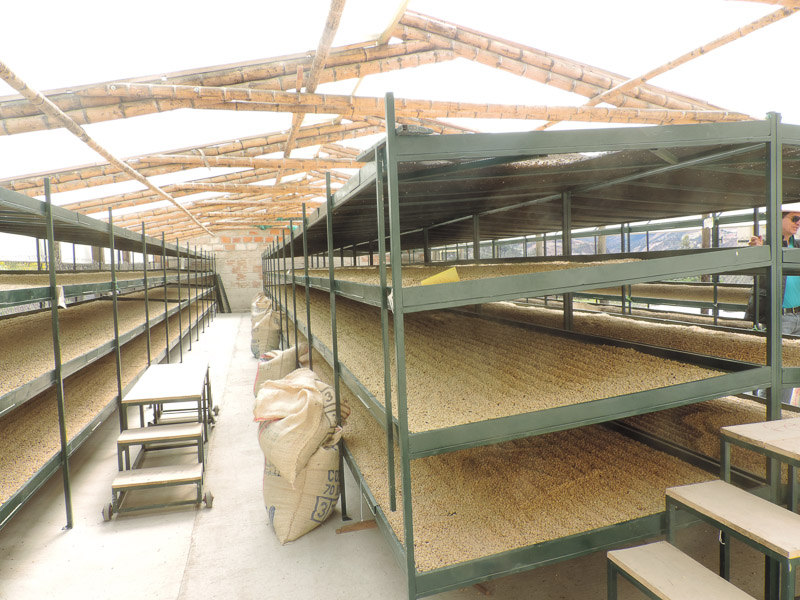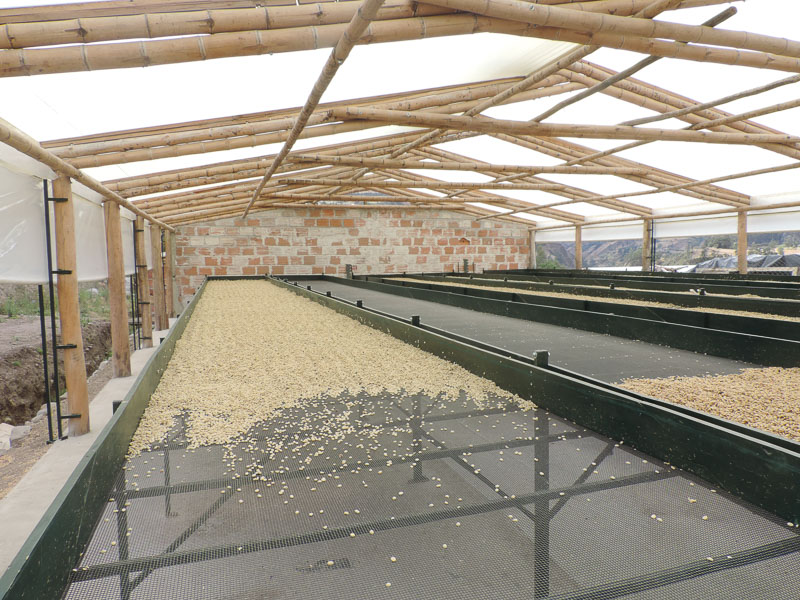Ovidio Gomez is a third generation coffee producer who inherited the tradition of coffee cultivation from his parents, who inherited it from theirs.
Finca Santa Marta is high in the mountains of the Santa Rita neighborhood at 2200 meters above sea level in the Santa Marta town of the San Lorenzo municipality of the Nariño department. The farm sits 3km from the Santa Marta town center and includes a small preserve providing habitat for native bird species, such as sparrows, curillos, carpenter birds, and blackbirds, and mammals, including chipmunks, foxes, and armadillos.
Finca Santa Marta is comprised of Ovidio’s inheritance from his grandparents and adjacent land he purchased from a neighbor. He is passionately dedicated to agriculture, having worked the land since he was young, educational opportunities having been limited during his youth. The farm has an excellent climate for coffee, with sunlight year-round that promotes healthy plant development through consistent photosynthesis, ultimately yielding coffee beans of excellent quality. Proximity to freshwater and rich soil full of organic material from decomposing forest layers further support the cultivation of specialty coffee. The region enjoys seven months of rain that coincide with the flowering and harvest and five dry months, occurring in July, August, September, February, and March.
Coffee is the main source of income for farmers in Santa Rica, and Finca Santa Marta also grows food for the family’s sustenance: sugarcane, plantains, citrus, and avocados. Don Ovidio manages all tasks related to coffee production, such as controlling weeds with a weedwhacker, rather than relying on herbicides. The farm is fertilized twice a year, and 2018 saw a decrease in volume compared with previous years but an increase in quality. Changes in climate were largely responsible for the dip in production; the rest was due to part of the property being stumped to allow trees to regrow. Currently, the farm has 5,000 trees, aged three to four years, in production, and 3,000 seven-year-old trees stumped, in what is known as farm renovation.
Jumpstarted by professional support from the local specialty coffee cooperative, coffee growers in the town of Santa Marta and Santa Rita neighborhood have seen excellent results, especially Don Ovidio. The producers in Santa Rita collect cherries at their peak ripeness after five weeks of maturation, careful to only select the ripest fruits. Cherries ferment for 12 hours after harvest and for another 26 hours after being depulped. This process is carried out under controlled conditions in a sealed tank, limiting coffee’s exposure to light and oxygen. The coffee is then fully washed with clean water and dried for 18 days in a solar dryer.



